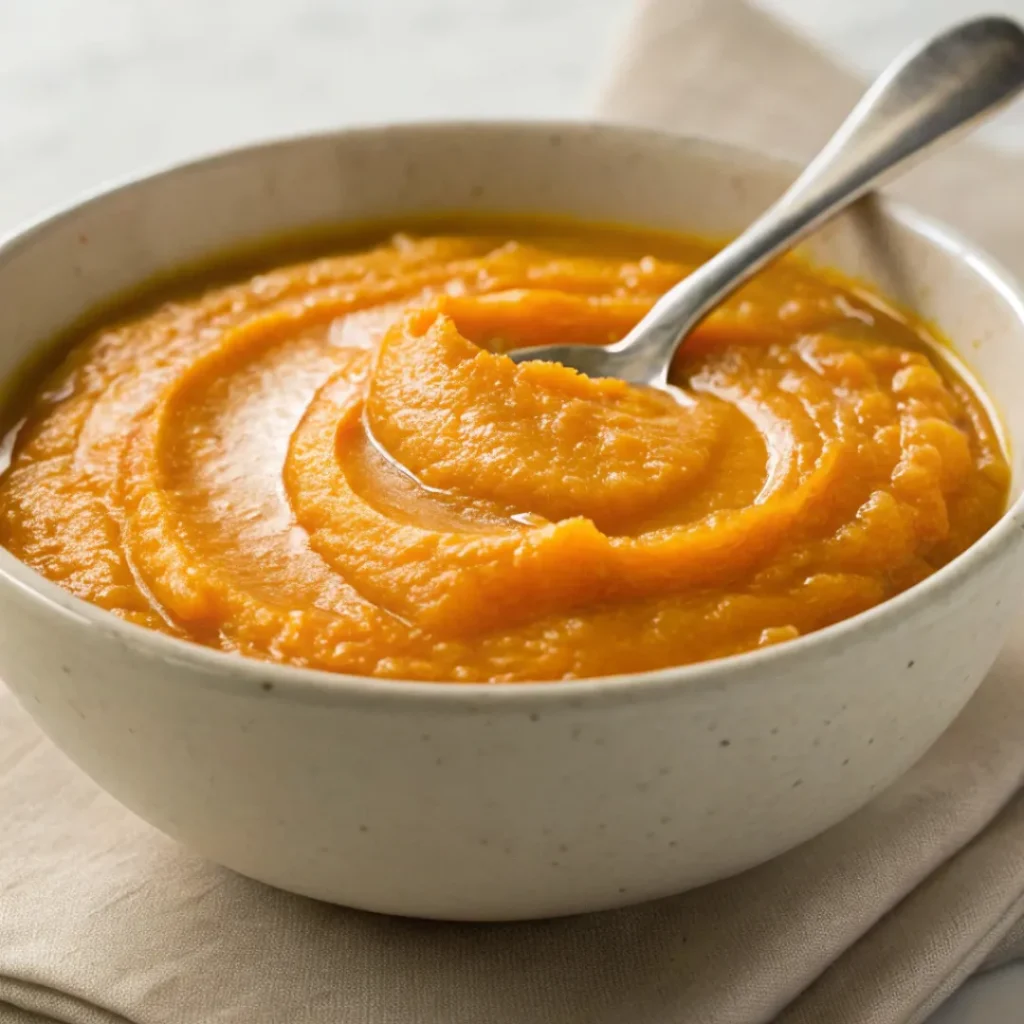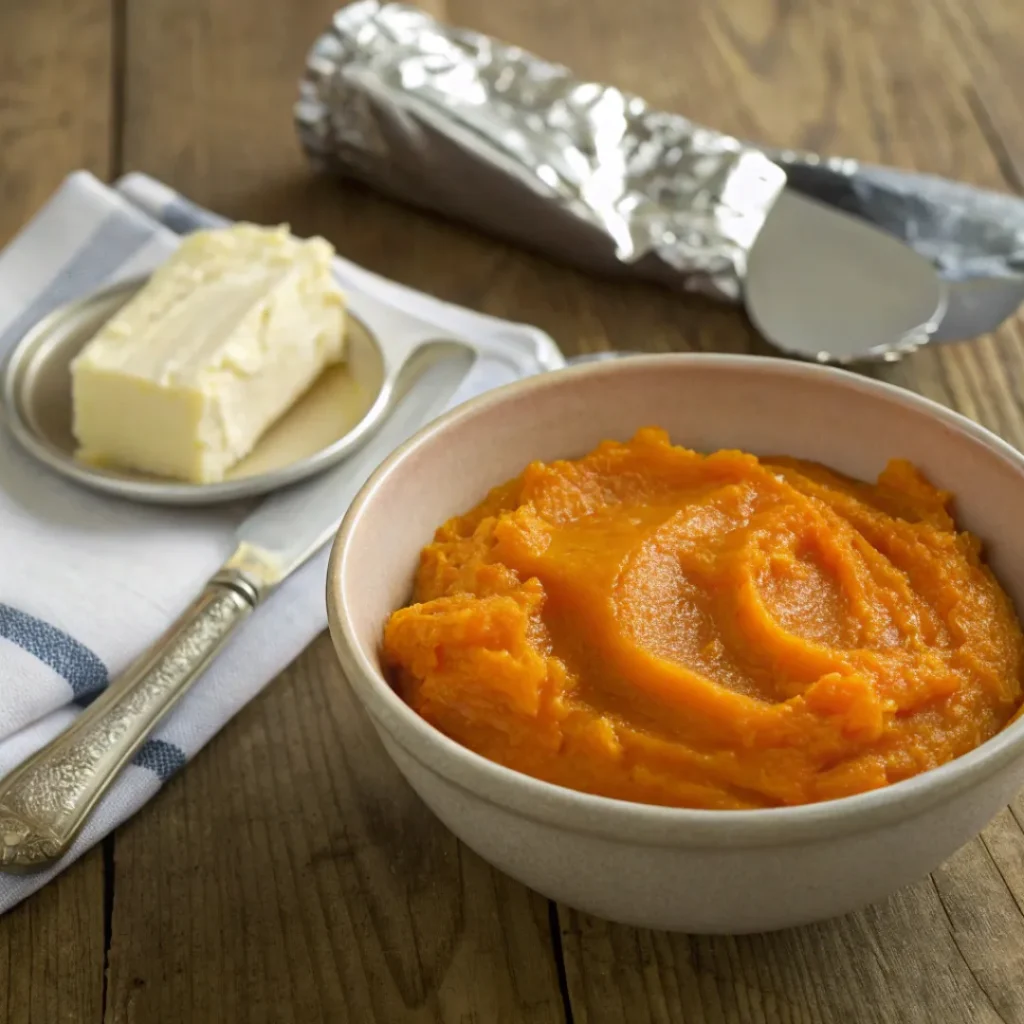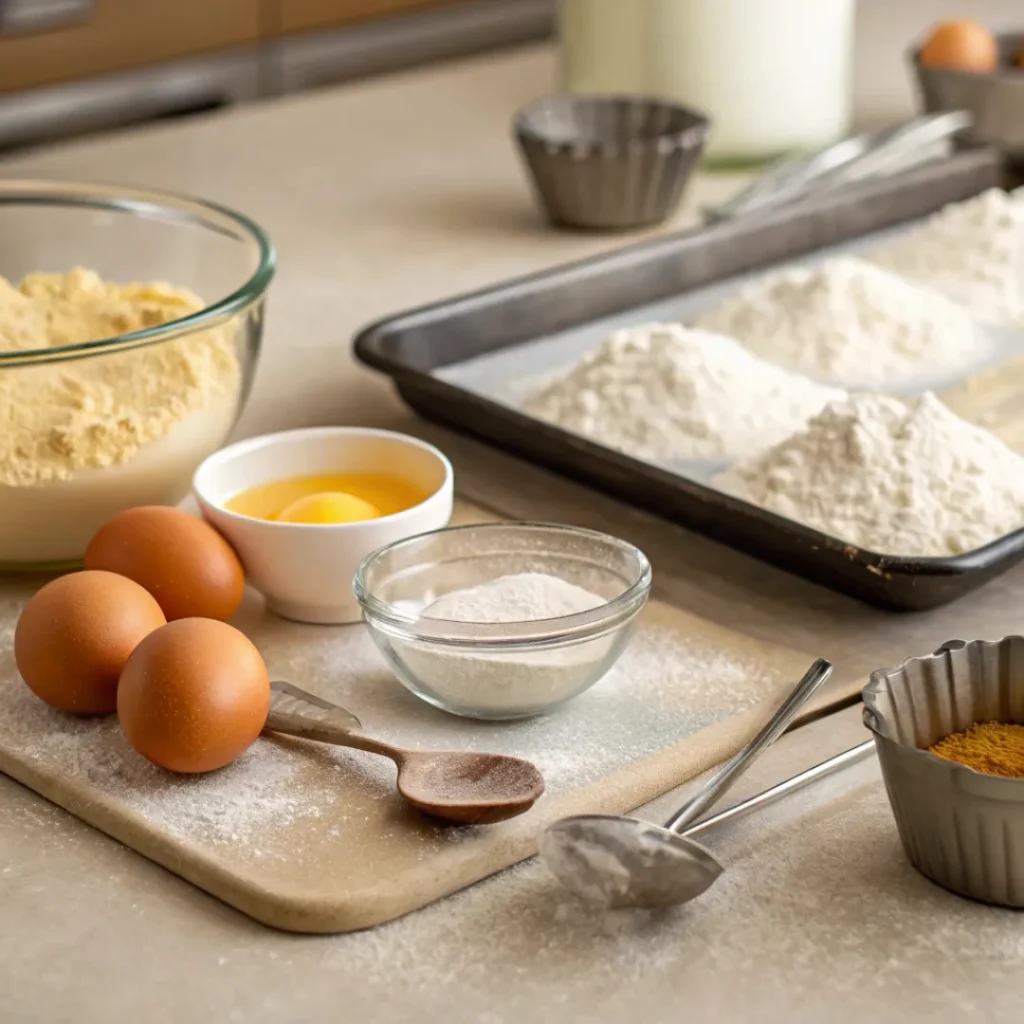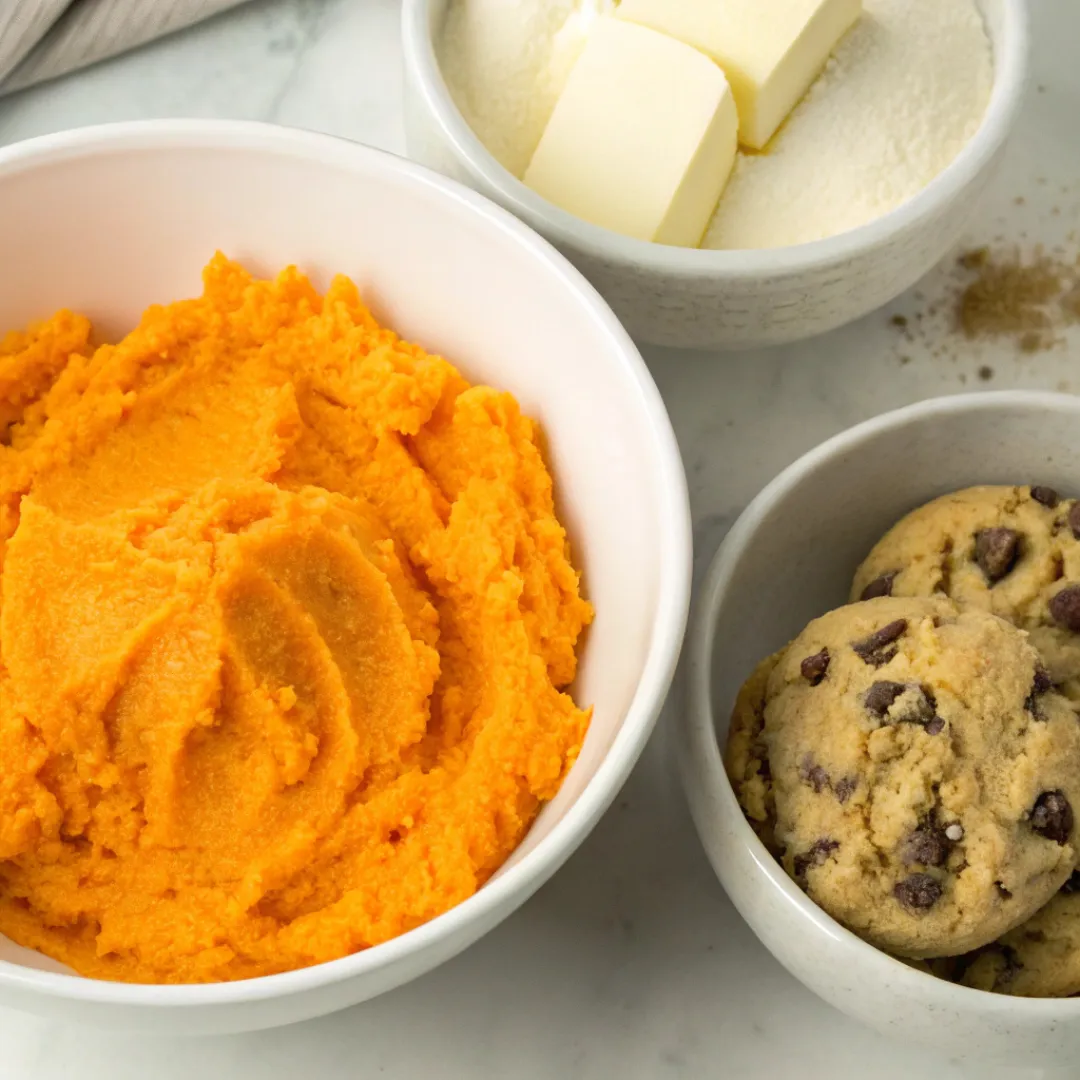In the world of baking, ingredient substitutions are a powerful tool. Whether you’re trying to create a healthier version of a classic recipe or catering to dietary restrictions, finding the right alternative to traditional ingredients can open up a world of possibilities. Among these possibilities is the use of pumpkin puree as a substitute for butter in cookie recipes. This approach not only adds a unique flavor to your cookies but also offers several health benefits. But can you really use pumpkin puree instead of butter in cookies without compromising on taste and texture? Let’s find out.
What is Pumpkin Puree?
Pumpkin puree is made by cooking and pureeing pumpkin flesh until it reaches a smooth, thick consistency. It is often used in recipes for pies, soups, and even as a substitute for other ingredients in baking.

Understanding the Role of Butter in Cookies
To understand whether pumpkin puree can replace butter, it’s essential first to understand the role that butter plays in cookie recipes. Butter is more than just a fat; it is responsible for several key aspects of a cookie’s texture and flavor. Explore the science behind baking with butter.
How Pumpkin Puree Affects Cookie Texture and Flavor
Pumpkin puree contains more water than butter, which can lead to a softer, cakier cookie. This is because the extra moisture creates more steam during baking, which contributes to a fluffier texture. The natural sugars in pumpkin puree also caramelize differently than those in butter, which can subtly change the flavor profile of the cookies.
Understanding the Moisture Content in Pumpkin Puree
Pumpkin puree’s high moisture content is a double-edged sword. While it can make cookies tender, it can also make them too moist or cause them to spread less during baking. To counteract this, bakers might need to adjust other ingredients in the recipe, such as flour or baking powder, to maintain the desired cookie texture.
How to Substitute Pumpkin Puree for Butter
If you’re ready to try substituting pumpkin puree for butter in your cookies, it’s essential to follow some basic guidelines to ensure success. Just as you might wonder if you can use frozen blueberries in cakes, understanding how different ingredients affect your baking is key. When using pumpkin puree, remember to adjust the moisture content and balance other ingredients to achieve the desired texture and flavor in your cookies.
Guidelines for Replacing Butter with Pumpkin Puree
A common rule of thumb is to use ¾ cup of pumpkin puree for every 1 cup of butter. This substitution works best in recipes where the flavor of pumpkin will complement the other ingredients. However, since pumpkin puree has more moisture, you may need to reduce other liquids in the recipe slightly to prevent the cookies from becoming too soft.

Best Practices for Achieving Desired Cookie Texture
Achieving the right texture with pumpkin puree requires some experimentation. If your cookies turn out too cakey, consider increasing the amount of sugar or adding a bit more flour. You can also try chilling the dough before baking, which can help the cookies spread out more evenly.
Flavor Considerations
One of the biggest changes you’ll notice when using pumpkin puree instead of butter is the flavor. While butter provides a rich, neutral backdrop, pumpkin puree adds its own distinct taste. If you’re interested in experimenting with other flavor pairings, you might wonder, does lemon and blueberry taste good together? Find out more about this pairing here and consider how different combinations can elevate your baked goods.
How Pumpkin Puree Alters the Flavor of Cookies
Pumpkin puree has a naturally sweet, slightly earthy flavor that can change the overall taste of your cookies. This flavor pairs well with spices like cinnamon, nutmeg, and cloves, which can enhance the autumnal qualities of your baked goods. However, if you’re not a fan of pumpkin’s flavor, this substitution might not be for you.
Pairing Pumpkin Puree with Complementary Spices and Ingredients
To make the most of pumpkin puree’s flavor, consider pairing it with complementary ingredients. Chocolate chips, nuts, and dried fruits can add texture and enhance the overall taste. Spices like cinnamon, ginger, and nutmeg can bring out the warmth in the pumpkin, creating a cozy, flavorful cookie that’s perfect for fall.
Texture Differences
Replacing butter with pumpkin puree will inevitably affect the texture of your cookies. While butter tends to create a denser, chewier cookie, pumpkin puree can result in a lighter, cakier texture.
The Impact of Pumpkin Puree on Cookie Texture
The additional moisture in pumpkin puree can make cookies softer and fluffier. However, this can be a drawback if you prefer a crispier cookie. To achieve a texture closer to that of a butter-based cookie, you might need to tweak the recipe by adding more dry ingredients or reducing the amount of pumpkin puree used.
Tips to Prevent Cookies from Becoming Too Cakey or Moist
If you’re aiming for a less cakey cookie, try using a blend of butter and pumpkin puree instead of replacing all the butter. This can give you the best of both worlds: the moisture and flavor of pumpkin with the rich texture that butter provides. Additionally, using a lower oven temperature and baking for a longer time can help the cookies firm up and develop a slight crispness on the outside.

Sweetness and Pumpkin Puree
Pumpkin puree has its own natural sweetness, which can affect the overall sugar content of your cookies.
Adjusting Sugar Levels When Using Pumpkin Puree
When substituting pumpkin puree for butter, you might need to adjust the sugar levels in your recipe. Since pumpkin puree is less sweet than butter, you may need to increase the amount of sugar slightly to compensate. However, this can vary depending on your taste preferences and the type of cookies you’re making.
Enhancing the Sweetness Without Overpowering the Pumpkin Flavor
To enhance the sweetness without overshadowing the pumpkin flavor, consider using brown sugar or a mix of brown and white sugars. Brown sugar’s molasses content pairs well with pumpkin, adding depth and complexity to the flavor. Alternatively, adding a touch of honey or maple syrup can complement the pumpkin’s natural sweetness.
Popular Cookie Recipes Using Pumpkin Puree
Pumpkin puree isn’t just a substitute for butter; it can be the star ingredient in its own right. For example, you could explore other delicious baking combinations like this lemon blueberry cake, which pairs the tartness of lemon with the sweetness of blueberries. Similarly, pumpkin puree can add moisture and flavor to your cookies, just as lemon and blueberry create a perfect balance in cakes.
Pumpkin Chocolate Chip Cookies
These cookies combine the best of both worlds: the richness of chocolate and the earthy sweetness of pumpkin. The pumpkin puree adds moisture, making the cookies soft and tender, while the chocolate chips provide a delightful contrast in texture and flavor.
Pumpkin Oatmeal Cookies
For a heartier treat, pumpkin oatmeal cookies are a great option. The oats add a chewy texture, while the pumpkin puree keeps the cookies moist. Spices like cinnamon and nutmeg elevate the flavor, making these cookies a perfect snack for chilly fall days.
Pumpkin Snickerdoodles
Pumpkin snickerdoodles are a fun twist on the classic cinnamon-sugar cookie. The pumpkin puree adds a subtle sweetness and a hint of autumnal flavor, while the cinnamon sugar coating gives the cookies a satisfying crunch.
Baking Tips for Success
When using pumpkin puree in cookies, a few tips can help ensure your baking venture is a success. Managing dough consistency is key, as pumpkin puree adds moisture, which can make the dough stickier than usual. If you’re experimenting with different baking techniques and flavors, like achieving the perfect balance of moisture and flavor in cakes, you might find inspiration in this ultimate lemon cake recipe. Similarly, tweaking the ingredients and methods can help you perfect your pumpkin puree cookies.
Managing Dough Consistency
The key to perfect pumpkin cookies lies in the dough consistency. Since pumpkin puree adds moisture, the dough might be stickier than usual. If the dough is too wet, try adding a bit more flour until it reaches the right consistency. Chilling the dough before baking can also help, as it allows the flavors to meld and the dough to firm up.
Baking Time and Temperature Adjustments
Pumpkin puree can cause cookies to bake differently than those made with butter. They might require a longer baking time at a slightly lower temperature to ensure they cook through without burning on the edges. Keep an eye on your cookies as they bake, and use a toothpick to check for doneness.
Common Mistakes to Avoid
While substituting pumpkin puree for butter can be rewarding, there are some common pitfalls to avoid.
Overusing Pumpkin Puree
It’s easy to go overboard with pumpkin puree, but too much can lead to overly moist, gummy cookies. Stick to the recommended substitution ratio and adjust other ingredients as needed.
Misjudging the Balance of Ingredients
Pumpkin puree can throw off the balance of ingredients in a recipe. Be mindful of how it interacts with other components, especially leavening agents like baking powder or soda, which can cause the cookies to rise too much or not enough.
Nutritional Comparison: Pumpkin Puree vs. Butter
For those looking to make healthier choices, understanding the nutritional differences between pumpkin puree and butter is crucial.
Calorie Content
Pumpkin puree is significantly lower in calories than butter. While butter contains about 100 calories per tablespoon, pumpkin puree has only about 10-15 calories per tablespoon. This makes it a great option for those looking to reduce their calorie intake.
Fat Content
Butter is high in saturated fat, which can raise cholesterol levels and increase the risk of heart disease. Pumpkin puree, on the other hand, is virtually fat-free, making it a heart-healthy alternative.
Vitamins and Minerals
Pumpkin puree is rich in vitamins A and C, potassium, and fiber, while butter provides minimal nutritional value. The addition of pumpkin puree can give your cookies a nutritional boost, especially in terms of vitamins and minerals.
Frequently Asked Questions
Yes, you can usually taste the pumpkin in cookies, especially if you use a significant amount. The flavor is subtle and earthy, often enhanced by spices like cinnamon and nutmeg.
Pumpkin puree can make cookies more moist, which might reduce their shelf life. It’s best to store them in an airtight container and consume them within a few days or freeze them for longer storage.
Can pumpkin puree be used in other baked goods?
Absolutely! Pumpkin puree is versatile and can be used in muffins, breads, cakes, and even pancakes. It adds moisture and flavor to a variety of baked goods.
Pumpkin puree works best in recipes where its flavor complements the other ingredients. It may not be suitable for all cookie types, particularly those where a crisp texture is desired.
Other butter substitutes include applesauce, mashed bananas, Greek yogurt, and coconut oil. Each has its own impact on flavor and texture, so it’s worth experimenting to see which you prefer.
Conclusion
Using pumpkin puree instead of butter in cookies is a fantastic way to create a healthier, flavorful treat. While the substitution does alter the texture and flavor, the result is a moist, tender cookie with a unique taste that’s perfect for fall. By following the guidelines and tips outlined above, you can successfully use pumpkin puree in your baking, creating delicious cookies that everyone will love.
So, the next time you’re in the kitchen, don’t hesitate to experiment with pumpkin puree as a butter substitute. Whether you’re looking to reduce fat and calories, accommodate dietary restrictions, or simply try something new, pumpkin puree is a versatile and nutritious option that can elevate your cookie game to the next level.

